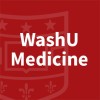
Patient-Centered Intervention to Reduce Cancer Patients' Financial Toxicity
Gynecologic CancerColorectal Cancer1 moreThe purpose of this study is to incorporate feedback from cancer patients and providers to adapt, implement, and test an intervention. The intervention aims to prompt screening for financial distress, facilitate discussions about care costs with cancer patients, support health insurance selection, and ultimately reduce cancer patients' financial toxicity associated with cancer care.

The Economic Burden of Asthma in Canada
AsthmaThe study will consist of three phases: Phase A: General population survey for estimation of the prevalence of asthma, and prospective collection of resource utilization and quality-of-life data for 12 months, Phase B: comparison of healthcare resource usage collected prospectively to the data collected using administrative data in the population recruited in Phase A, and Phase C: Economic modeling of asthma to extrapolate the findings across Canada and into the future years.

Proton Pump Inhibitor (PPI) Inappropriate Use and Economic Burden in Chinese Population
Gastrointestinal DiseaseThis is a descriptive retrospective database analysis study in using database. All patients with a physician PPI prescription will be selected to estimate the PPI inappropriate use.

Financial Burden Associated With Stroke Rehabilitation
StrokeStroke is one of the main causes of disability and the fourth leading cause of death. All over the world, stroke prevalence varies between 1.9% and 4.3%among adults older than 20 years. The incidence of a stroke increases rapidly with age, double every decade after 55 years old. After a stroke, survivors may experience several issues (i.e. rehabilitation) that increase their direct costs. Stroke survivors and their families may face considerable stroke-related financial burden. To evaluate the total amount or costs use for formal and informal care and the equipment or materials needed for care. This study will be conducted to evaluate the Financial Burden associated with stroke Survivors rehabilitation during their first post stroke year and to analyze the basic predictors of these financial expenses. Data will be collected from Sheikh Zayed hospital Lahore. A cross sectional Longitudinal study will be conducted. The Study will be conducted within 6 months of time period. Post stroke patients who discharge from hospital, after this disease had directly impacts on the survivors' and their family's lives and requires a long rehabilitation process, so they faces many challenges which will be studied. The Barthel Index Scale and Modified Charlson Co-morbidity Index is used to examine the participants autonomy in everyday life activities and their co-morbidities were administered in Stroke Survivors. Stroke Survivors who willing to participate will join in this study and the signed informed consent form will be taken from all participants. After getting approval from research committee data will be collected from the participants and SPSS V 25 will be used for data entry and analysis. The results of this study will help to explore the total amount of cost which use in stroke survivors rehabilitation process.

Measuring Consequences of Disability for Patients With Multiple Sclerosis and Caregivers on Economic...
Multiple SclerosisPhysical Disability4 moreThe objective of this study is to measure economic burden of Multiple Sclerosis (MS) from a new point of view that includes consequences of disability on Quality Of Life (QOL), social participation and capabilities of patients and caregivers. To the investigators' knowledge, there is currently no data including intangible costs related to caregivers and calculating the overall economic cost of Multiple Sclerosis, particularly, in France.

Characteristics, Treatment, and Economic Burden of Patients With CVD,CKD or at High Cardiovascular...
Cardiovascular AbnormalitiesChronic Kidney Diseases1 moreThe heavy disease burden is mainly due to diabetic complications. Diabetes is a major risk factor for cardiovascular disease (CVD) and chronic kidney disease (CKD).China has been the largest absolute disease burden of diabetes in the world recently1. Diabetic patients with established CVD or CKD are bringing growing pressure upon our nation's healthcare expenditure1. However, the characteristic profile of Chinese diabetic patients who has CVD, CKD or at high risk of CVD remains unclear thus is in urgent need for in-depth investigation.In current China, however, the information regarding diabetes or non-diabetes patients who also had other comorbid conditions (e.g. established CV diseases, CKD or at high risk for such problem), is limited; the patient characteristics, treatment patterns and economic burden may not be fully understood.Therefore, based on TianJin regional database, the investigators will describe the demographic, clinical characteristics, treatment, and economic burden of disease of Chinese diabetic/non-diabetic patients with/without established CV disease, CKD, or at high CV risk including hypertension and hyperlipidaemia. And the investigators believe that the resulting findings will inform a comprehensive group of evidence users to achieve better healthcare for diabetes patients with established or at high risk of CVD or CKD.

Retrospective Analysis to Describe Patient Profiles, Current Treatment Patterns and Economic Burden...
AsthmaThis Retrospective cohort study with an overall objective of to perform a descriptive analysis of the asthma patient population in the Emirate of Dubai with respect to healthcare resource utilization, costs, and asthma-related treatment patterns and outcome.

Clinical and Economic Burden of Bleeding Events in Patients in the UK With Non-valvular Atrial Fibrillation...
Atrial FibrillationThe purpose of the study is to estimate the impact of bleeding events in patients in the UK with non-valvular atrial fibrillation (NVAF) treated with vitamin K antagonists (VKA).

Clinical and Economic Burden of Patients With Chronic Obstructive Pulmonary Disease in a Medicaid...
Pulmonary DiseaseChronic ObstructiveReports suggest that the Medicaid population includes a higher percentage of smokers than the general population. A high prevalence of smokers in a population is likely to lead to a higher burden of chronic obstructive pulmonary disease (COPD). Few studies have evaluated the economic burden of COPD in a Medicaid population. The objective of this observational, retrospective cohort study is to estimate the economic burden of COPD in subjects with a COPD diagnosis who are enrolled in Medicaid and are receiving maintenance treatment covered by Medicaid. Specifically, the null hypothesis for the primary outcome measure is that no difference is observed in all-cause costs between subjects with and without COPD. The test hypothesis is that there is a difference in all-cause costs between subjects with and without COPD. Secondary outcomes to be evaluated include all-cause resource use and COPD-related costs for the COPD cohort. The study uses a medical and pharmacy administrative claims database called MarketScan Medicaid Database that contains the medical, surgical, and prescription drug experience of nearly 7 million Medicaid recipients. This analysis will use data from 8 states.

Economic Burden in Adult Patients Diagnosed With Rheumatoid Arthritis (RA) Receiving Treatment With...
Rheumatoid ArthritisThe purpose of this study is to explore the differences in productivity loss and costs between patients being treated for rheumatoid arthritis (RA) with biologic disease-modifying antirheumatic drugs (bDMARDs) compared to patients treated with conventional DMARDs.
